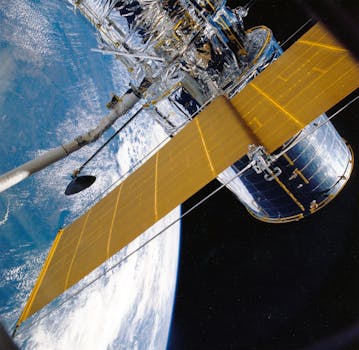Future of Satellites: Revolutionizing Global Connectivity and Exploration

The future of satellites is a rapidly evolving field, with significant advancements being made in recent years. As we continue to push the boundaries of space exploration and global connectivity, satellites are playing an increasingly crucial role. Future of satellites is an exciting and dynamic field that holds immense potential for transforming various industries and aspects of our lives.
One of the primary areas where satellites are making a significant impact is in global connectivity. With the rise of satellite constellations, such as those being developed by companies like SpaceX and OneWeb, we are witnessing a new era of high-speed, low-latency internet connectivity. These constellations consist of thousands of small satellites that work together to provide seamless and ubiquitous coverage, enabling people in remote and underserved areas to access the internet and other vital services.
Satellites are also revolutionizing the field of navigation and mapping. With the development of advanced satellite-based navigation systems, such as the Global Positioning System (GPS) and the European Union’s Galileo system, we are able to determine our exact location and navigate with unprecedented precision. This technology has numerous applications, from aviation and maritime to personal navigation and logistics.
Advances in Satellite Technology
In recent years, we have seen significant advances in satellite technology, from the development of more efficient propulsion systems to the use of advanced materials and designs. One of the most exciting developments is the emergence of small satellites, also known as CubeSats. These tiny satellites, which are often no larger than a shoebox, are capable of performing a wide range of tasks, from Earth observation to communication and navigation.
Another area where satellites are making a significant impact is in the field of Earth observation. With the launch of advanced satellites like the NASA’s Landsat 8 and the European Space Agency’s Sentinel-2, we are able to monitor the health of our planet with unprecedented precision. These satellites provide high-resolution images of the Earth’s surface, allowing us to track changes in the environment, monitor natural disasters, and predict weather patterns.
Challenges and Opportunities
Despite the many advances in satellite technology, there are still significant challenges that need to be addressed. One of the primary concerns is the issue of space debris, which poses a significant threat to the long-term sustainability of space exploration. As the number of satellites in orbit increases, so does the risk of collisions and the accumulation of debris.
However, these challenges also present opportunities for innovation and growth. The development of new technologies and strategies for mitigating space debris, such as the use of de-orbiting systems and collision avoidance maneuvers, is an area of ongoing research and development. Additionally, the increasing use of satellites is driving the development of new industries and job opportunities, from satellite manufacturing to space tourism.
Conclusion
In conclusion, the future of satellites is a rapidly evolving field that holds immense potential for transforming global communication, navigation, and exploration. With advancements in technology and the increasing use of satellites, we are witnessing a new era of innovation and growth. As we continue to push the boundaries of space exploration and global connectivity, it is essential that we address the challenges that arise and work towards creating a sustainable and equitable future for all.




